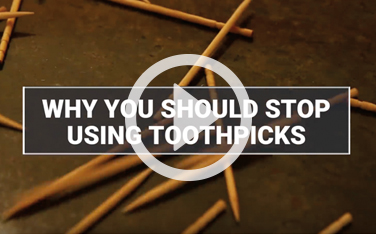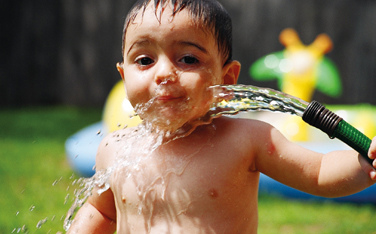Does sleep time mean teeth grinding time for your child? An estimated 15 to 33 percent of children,1 compared to roughly 8 percent of adults,2 will grind their teeth at some point. Most teeth grinding (also called “bruxism”) happens after kids doze off to sleep. That can make it tough for them to know it’s happening. Luckily, parents can help by learning how to recognize grinding and how to address it.
Wellness
Say “lights out” to kids’ teeth grinding
Identify teeth grinding
When it comes to teeth grinding, every child has a different experience. Some children don’t exhibit any symptoms, but in other cases, bruxism can lead to chipped teeth or worn-down tooth enamel. This can result in pain while chewing and increased sensitivity to hot and cold. Additionally, kids can develop headaches or earaches, and in severe cases, jaw pain that makes it difficult to chew or open their mouths.
Listening while your child sleeps is another way to catch teeth grinding. Because of the grinding noise, bruxism is easy to differentiate from other sleeping sounds. If you suspect your child is affected, schedule an appointment with the dentist to get a diagnosis and learn about treatment options. Keeping regular dental appointments also gives your child’s dentist a chance to identify signs of bruxism like tooth fractures or other damage to teeth.
Help your child stop
To put an end to teeth grinding, it can be helpful to identify the root cause. Multiple factors can lead to bruxism, including stress, anxiety, hyperactivity, reactions to medication, teeth misalignment and any source of pain such as growing pains, injuries, incoming teeth and more. Kids often stop grinding their teeth when these factors dissipate or when their adult teeth grow in. Some, though, maintain the habit into adolescence.
If this happens to your child, you have several options. Your child’s dentist may recommend a night guard to protect teeth in cases where bruxism is causing damage. Dental coverage for night guards – commonly referred to as “occlusal guards” – varies, so check your plan to learn if they’re covered.
Watch out for common indicators of stress like behavior shifts, sleep difficulties and changes in appetite. If your kid’s teeth grinding is a result of stress, try to identify and address the stressors by discussing it directly with your child. Additionally, you can help with a few soothing steps around naptime and bedtime.
• Avoid giving your child caffeine, especially before going to bed.
• Designate 10 to 30 minutes to establish a consistent routine. This could include calming activities like reading a book or listening to relaxing music.
• Turn off electronics to give your child adequate time to wind down and prepare for sleep. The National Sleep Foundation suggests a curfew for digital devices of 30 minutes to two hours before naptime or bedtime.
By knowing what to look for and working with your child’s dentist, you can help your kids stop grinding their teeth and get back to peaceful sleep.
1WebMD, Dental Health and Teeth Grinding (Bruxism), https://www.webmd.com/oral-health/guide/teeth-grinding-bruxism#2
2National Sleep Foundation, Teeth Grinding, https://sleepfoundation.org/sleep-disorders-problems/bruxism-and-sleep
Are you picky about your gums?
When it comes to using toothpicks, this video gets right to the point. Take a peek to find out why it’s best to trade toothpicks for floss.









